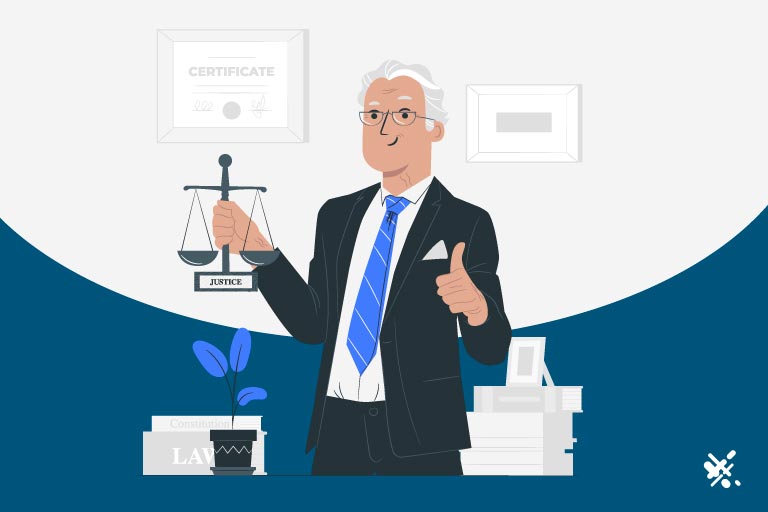If you run a credit repair business, you know you are working with a unique type of client. Your clients may need help cleaning up their credit, credit monitoring services, and credit-building advice. Of course, how much you can offer depends on the range and scope of your credit repair merchant account and its services. One thing all credit repair companies have in common is that they need payment processing services and a high-risk merchant account.
Credit Repair Industry Overview
The U.S. credit repair market was worth $4.84 billion in 2024 and is projected to grow to $10.57 billion by 2030, with 43,810 agencies in the US.
The majority of credit repair agencies deal with credit report disputes. Not necessarily debt consolidation or credit counseling. But a significant portion of these consumers with a bad credit report do actually need help with rebuilding their credit. However, credit reporting bureaus only address about 15% of consumer disputes.
Does Credit Repair Work?
Credit repair works for many consumers. Common items removed are collections (55% success rate), late payments (54%), and medical bills (43%). Bankruptcies can be contested and removed around 11% of the time.
Many of these items will fall off a report on their own after seven years. But consumers who need better credit now—perhaps for a loan, vehicle financing, or a mortgage—can benefit from some expedited service. And that’s where you come in.
Of course, you’re not going to do this for free. Although credit repair merchants are helping people rebuild their financial lives, they still deserve to be paid for helping consumers improve their credit scores. But the issue with collecting payment is merchant account approval.
Payments With a Credit Repair Merchant Account
Tier One Banks (Chase, Citi, Wells, Bank of America) are reluctant to work with credit repair merchant accounts. That means credit card processing companies like (PayPal, Stripe, and other similar payment aggregators) are also reluctant to provide a merchant account for credit repair companies.
Reluctancy results from your clientele. They have already demonstrated an inability to make their credit card payments on time. In some cases, they may have entirely defaulted on their payments and declared bankruptcy. Irresponsible clientele means more risk for your business and more risk to process payments such as those with chargebacks.
Customer Initiated Chargebacks
Credit repair payments from consumers for services rendered may also be subject to more frequent chargebacks. A chargeback is when a customer contacts their bank or credit card company to dispute a charge instead of reaching out to the merchant. Creating a cascade of fines and fees that submerge everyone in the payment processing landscape—including you, the merchant.
As mentioned above, credit repair works most of the time. But sometimes it doesn’t. Customers may be upset that their scores did not improve. Some of these consumers may have a chance of seeing the score improve if they give it time. But you can probably guess how that goes when someone needs a loan now.
Why Chargebacks are a Problem For Your Credit Repair Merchant Account
Let’s briefly review chargebacks and the broader reasons why they are problematic to payment processors and merchants. As mentioned, a chargeback is when a customer (in your case, someone getting their credit repaired) contacts their bank to reverse a charge.
This is not the same as soliciting a refund from a merchant. The chargeback creates (as mentioned) fees and fines that hit all parties involved in a credit or debit payment: the customer bank, your acquiring bank, the card network, and the payment processor. Because the reversal is not going through the normal channels, fees and fines are higher.
In the process of undoing the charge, these parties cover their costs by passing the buck on to the merchant. Chargebacks can cost merchants hundreds per transaction, in addition to the lost sale. Which in your case, is perhaps a consultation fee or a monthly fee for ongoing credit monitoring and proactive negotiation with bureaus.
How Many Chargebacks Are Too Many?
Payment processors do not like dealing with chargebacks. In fact, most payment processors will drop a merchant from a partnership if the merchant’s chargebacks exceed 1% of sales and/or if they experience more than 100 chargebacks per month.
However, these numbers are somewhat subjective. Moreover, for small businesses, that 1% mark may not be hard to hit. If you are a small credit repair company with 100 customers, and even just one or two of them file a chargeback, you’ve likely already put your business in the proverbial scope of your payment processor.

Potential Legal Issues in the Landscape
Another reason that the credit repair industry is subject to chargebacks is due to unscrupulous business practices. We’re not pointing any fingers here, but there’s a reason why The Credit Repair Organizations Act was passed. Credit repair companies (and credit counselors) may make promises they cannot keep, collect payment up-front, provide inaccurate information, or even advise consumers to wrongly dispute accurate information.
And this is another reason why credit repair payment processing requires a unique solution. In addition to the chargebacks that can result from unscrupulous business practices that may be discovered by disgruntled customers, there are serious legal issues here.
Banks and payment processors do not like working with merchants in industries that present potential legal issues. There is just too much risk on the micro-level (collecting individual payments) and on the macro-level (with class action lawsuits).
Merchant Services for Subscription Services
A final consideration for credit repair agencies is finding a merchant processor who can facilitate subscription services. You can market credit monitoring in addition to credit repair, along with credit counseling services for customers who need to rebuild their credit.
Recurring billing will help provide a steady income stream. If you are using something like Credit Repair Cloud (from Salesforce) to manage your clients, you will also want to find a payment processor that can integrate with this SaaS—like a Credit Repair Cloud payment processing solution.
As a side note, subscriptions are actually a very good aspect of an ongoing business model for credit repair companies. Once you have resolved an acute credit reporting issue on behalf of a client, you can offer ongoing services like identity theft monitoring, credit report monitoring, and credit counseling.
If loan consolidation is part of your services, that will inherently require a subscription-based payment model so you can collect money on time. But even if it isn’t, you can build some desirable proactive consumer credit-related services into a subscription bundle. With a credit or debit card input into an online payment gateway, you can collect a monthly fee from customers you retain, building a solid income stream.
Recurring Billing Can Generate Chargebacks
Of course, one drawback to the subscription services model is that it can expose you more often to chargebacks. This happens (as mentioned) when the customer initiates a payment cancellation with their bank, instead of you. There are a few reasons they might do this. One of them is that they are no longer interested in paying for your services.
But by the time they contact you—perhaps after seeing a charge on their monthly bank statement—it’s probably past your statute of limitations in terms of how far out you’ll return a payment. In frustration, the customer initiates a “return” with their bank.
One way to get around this problem is to be flexible in terms of cancellation policies, perhaps letting customers cancel a charge up to 30 days after it’s processed. However, there are some obvious downsides to being too flexible with the ways in which you collect money (namely, too often having to return the money you collect).
All the same, even if you have a flexible cancellation policy, customers may not even initiate a cancellation with you in the first place. One reason this happens is because they don’t remember who you are or why a charge from you is on their bank statement.
This can especially occur if your “doing business as” name is different from the name on your business paperwork. Keeping names consistent across consumer-facing materials at least can minimize this kind of friendly fire.
Other Ways Credit Repair Merchants Can Avoid Chargebacks to Their Merchant Account
Another way of saying “don’t shoot” in terms of customer chargebacks is staying in touch with your customers. This is a generally good business practice. But it’s also one that’s particularly beneficial for minimizing chargebacks. Something as simple as a weekly email newsletter (perhaps with credit-building tips) can keep your name in front of customers so they remember what they’re paying for.
You will also want to keep lines of communication open at all times. A substantial number of credit repair companies are actually just one person because it’s an easy and relatively scalable business model to manage as an LLC or sole proprietorship.
While that means you won’t have a customer service department to field calls 24/7, it does mean you can have multiple social media channels wherein you answer your direct messages and/or respond to comments. Then, of course, you should have an email and business phone number visibly listed on your website or social profiles.
Over time, that might mean hiring an independent contractor as a 1099 to do some social media management. Or you can even get an in-house person. But whatever the case may be, keeping the lines of communication open can go a long way toward preventing frustrated customer chargebacks. Additionally, with the right content and hashtag-induced visibility, it can also mean new business, of course.
ACH Payments Instead of Credit Card Payments
Another way to minimize chargebacks is to have customers use an ACH payment instead of credit and debit cards. Chargebacks don’t really work the same way in the ACH network as they do with card networks. So they limit your fees and fines.
The ACH network stands for the Automated Clearing House Network. It’s a network of thousands of participating banks and similar financial institutions. ACH transfers go right from one bank account to another via a system of debits and credit managed by network operators. Common examples of ACH payments include payroll and bill pay. But they can also be used for merchants instead of debit and credit card payments.
It really doesn’t take much to have a customer set up recurring ACH payments. You just need them to provide a few pieces of information. namely their bank account number and routing number. Then obtain their consent for conducting withdrawals on a pre-arranged day of the month that both parties agree on. A good payment processor will have an optimal way of setting up ACH payments for your business through an online portal that integrates with your website.
An additional benefit to ACH payments (aside from minimizing your exposure to chargebacks) is that because they are tied to account and routing numbers, you won’t have any bounced or missed payments. Unless, there is no money in the account, resulting in an NSF (insufficient funds) return code. That’s because while credit card numbers can change, and plastic cards can get lost, bank account numbers are forever—barring account closure.
Drawbacks to the ACH Method for Credit Repair Services
You might be wondering: if ACH payments are so awesome, why aren’t all businesses using them all the time? In fact, many businesses do. ACH payments are fairly common for landlords and companies that require recurring bill pay (like utility services or internet service providers). They are less common for merchants that require one-off payments.
The reason for this is that providing checking account numbers and rounding numbers is not convenient for most customers. First off, they don’t typically know these numbers off the top of their head. It’s far easier for consumers to take out a piece of plastic or wave their phone over a payment terminal. If you’re collecting payments in person (say, as part of a credit consultation), a mobile terminal (one as simple as something that connects to the USB port in your phone) might be the way to go.
Recurring Payments Made from Home
But if you’re directing clients to pay online, asking for ACH payments instead of credit cards is not a significant hurdle. That’s because asking for a check instead of a card (at home) is not that difficult for consumers to navigate. If they don’t have paper checks (and an increasing number of them don’t), they can log on to their online banking (via the computer or on their mobile phone). Which is awkward to do while paying for something—but not awkward while sitting at home.
In many states, you are allowed to offer consumers with a discount for collecting ACH payments. That’s because while card networks will hit you with 2-4% fees per transaction, the average ACH payment costs just $0.29 regardless of the size of the transaction.
While knocking a few dollars off a sizable one-time charge for acute credit repair may not be so appealing, knocking 5% off a monthly fee for ACH payments (instead of card payments) can be a significant selling point.
As far as payment processing goes, the point is finding a payment processor who can set you up with ACH payments in addition to plastic payments. And as mentioned, as far as payment gateway integration goes (with your website), the consumer-facing end of things is not that difficult. It’s also a good idea to give customers options. However, encouraging them to make ACH payments can lead to reduced customer churn and chargebacks.

QR Code Payments
Another payment method that bears mention is QR codes. QR codes are a pattern of black and white squares (they can be colored) that customers can scan with their phone camera. Their phones will then prompt them to click over to a webpage, such as your payment portal.
Merchants should know that QR code payments are processed as card-not-present transactions. Even if a customer is sitting in front of them. That’s because the payment itself is not done through a POS terminal. Rather, it’s done online—no different than if they were at home.
If you offer in-person consultations, a QR code can be a smooth way of collecting credit repair client payments. If it’s on a business card, concluding the conversation with a presentation of your card and QR code can be the segue to collecting a card payment.
As you can see, there are a number of ways for a credit repair merchant to collect payment from customers. A good payment processor will be able to facilitate these payment methods: QR codes, ACH payments, and normative credit card processing.
High-Risk Credit Repair Merchant Account
In summary, credit repair agencies cannot rely on cookie-cutter solutions for payment processing. They will need a high-risk merchant account because the credit repair industry presents several risks: (1) clients and their financial history (2) chargebacks, and (3) legality.
Now it’s time to introduce the concept of a high-risk payment processor. A high-risk payment processor specifically works with companies that have a history of chargebacks, or industries that do. They will also work with industries that may present legal issues, or deal with potentially embroiling goods or services—and we don’t mean embroiling as a culinary term.
Firearms, CBD products, supplements, adult entertainment, and gambling sites are a few types of businesses that require a high-risk payment processor. And while you may not find these businesses as colorful as some consumers, there are plenty of less exciting businesses that also require a high-risk payment processor. Such as credit repair.
Is Credit Repair a High-Risk Industry?
In most cases, yes. That’s because (as mentioned) credit repair companies (just like debt consolidation firms) can present opportunities for legal trouble. For instance, if a customer is so deeply unsatisfied with the credit repair services proffered by a specific individual or company, they may sue that person (or company) for an amount beyond the small claims court limit in their state. Financial institutions do not want to get involved in these types of problems. Nor do they want to service the payments they collect.
Rules around credit counseling, consolidation, and repair might also vary from state to state. More often than not, consumers are the most protected party when it comes to problems. Financial institutions also do not like to get involved in payment landscapes where the rules of that industry vary from location to location.
For all these reasons, a high-risk payment processor will probably be the way to go. Options like Stripe or PayPal are a no-go for these types of merchants. That’s because these large companies are actually payment aggregators.

Why You MUST Not Use Payment Aggregators For Your Credit Repair Merchant Account
Aggregators bundle their customer merchants under their own merchant ID. Since they don’t want to compromise their relationship with their banks, they will drop any potentially problematic merchants instantly.
High-risk payment processors, by contrast, are different. They are not large aggregators that don’t have time for their merchants. They will often create fee structures and pricing plans that work for both parties, rather than forcing merchants into something like flat-rate pricing or tiered pricing. Something that often seems nice upfront, but usually ends up being a confusing nightmare.
Merchants should keep in mind that high payment processors minimize their risk by charging slightly higher fees. Sometimes they will also require merchants to keep a rolling reserve on hand. This cash on reserve is meant to cover the cost of chargebacks and fees.
Merchants should keep in mind that customer service is important. You want to have a payment processor that will pick up the phone when you call. Preferably through the means of a point person like a dedicated account manager. For credit repair companies, many of which operate as LLCs or sole proprietorships, having this kind of responsive customer service is perhaps the most important consideration.
To contact sales, click HERE. And to learn more about ECS Payment Processing visit Credit & Debit.
